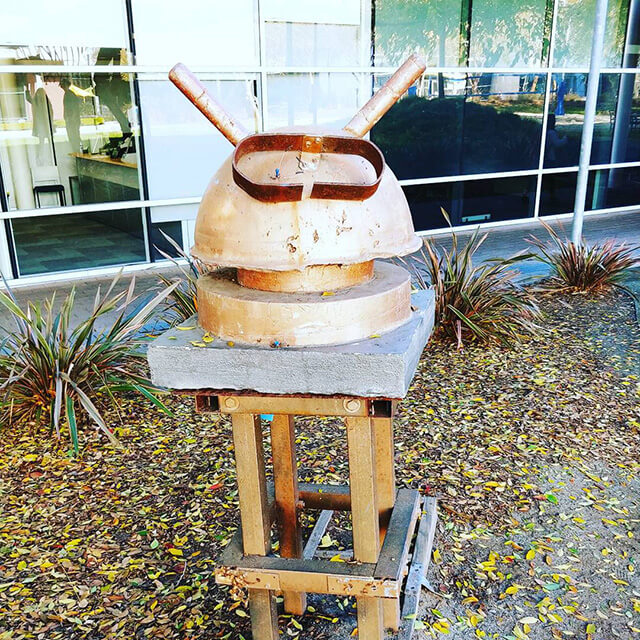
Online advertising experts love to talk about the importance of matching your landing page content to your ads. And you’ll get no argument from me — it’s a great way to improve the performance of your online advertising.
I mean, it just makes sense. People click on your ad because the messaging resonates with them. If you have the same messaging on your landing page, that should resonate with these users and cause them to convert, right?
As great as this approach is, the success or failure of a “match your landing page to your ads” approach to advertising rides on one critically important assumption: that you’re using the right ad messaging.
Unfortunately, if your landing page strategy is based on your advertising strategy, there’s no easy way to test this assumption. You are fundamentally limited by your ability to predict what messaging will work for your target audience. If you’re way off-base, there’s no real way to know.
But what if we flip things around? What if, instead of matching landing pages to ad content, you matched your ad content to your best-performing pages?
Reversing your advertising process
Most of the time, advertisers work in one direction. We come up with an advertising concept or message, create an ad that matches, and then fill in the missing pieces between that ad and a completed sale: landing pages, forms, lead magnets, promotions, sales collateral and so forth.
Then, when we want to improve things, we go back to our pieces and try to figure out how we could improve them. Poor click-through rate? Let me try tweaking the ad copy. Not enough people signing up for your email list? Let’s change up our lead magnet. Not enough sales? Let’s offer a promotion.
All of these tweaks, however, assume that you actually know what your customers want and you just need to refine your presentation. That’s not always the case. Your audience isn’t you, so they don’t always want what you think they want.
Many big companies recognize this and use surveys or focus groups to try to get inside the heads of their target audience. However, for most of us, that sort of in-depth research can be a bit hard to pull off. So we end up taking our best guess and making tweaks instead.
This works well enough most of the time, but what do you do when your best advertising ideas still aren’t delivering adequate results? In this situation, it may be helpful to try reversing your advertising process. Instead of coming up with different ways to catch your customer’s eye, start by looking at what your customers are responding to on your website and landing pages.
Learning from your website
The easiest way to do this, of course, is to take a look at the messaging on the top-performing pages of your site. For example, if you are tracking conversions in Google Analytics, you can take a look at the conversion rates of your different site pages by clicking Behavior > Site Content > Landing Pages:

Essentially, this report tells you how many people landed on a particular page and then went on to convert on your site. In other words, regardless of how they got to your site, these people saw something they liked on your site and converted.
Of course, you’ll want to make sure that you are looking at the right conversion goal and taking into account how many visits a given page received, but this report can quickly tell you which site pages were most in line with what your customers want. No guesswork, just data. They came, they saw, and they converted.
Now the question is, why?
At this point, you can start reverse-engineering your advertising. Look at your pages and ask yourself the following questions:
- What is the main message of this page? (headline, body copy, images and so on)
- Why would someone convert after seeing this page? (pain points, selling points, offers and more)
- How are people getting to this page? (e.g., ads, organic search, social media)
- Who is visiting this page? (In Google Analytics, you can add demographics data like gender as a secondary dimension to get a feel for this.)
- What makes this page different from other pages on my site with similar traffic volume? (different message, better copy or something else)
- Where does this page fit in my marketing funnel? (e.g., awareness, intent)
- How does this page interact with the rest of my marketing funnel? (leads traffic to next part of my funnel/site effectively, for example.)
Once you’ve identified the elements that make a particular page deliver the results you’re looking for, you can then use that information to come up with a great ad (or even fill in some of those other steps, like lead magnets).
For example, if you have a page with a great conversion rate that uses a different headline and hero shot from the rest of your site, you might want to try using something similar in your ads. Alternatively, if your conversion rate is best amongst 35- to-44-year-old men, those ads you’ve been running that appeal to millennial women might not be helping your cause.
In any case, if you’re getting better results from a certain page on your site than you are from your ads and landing pages, there’s a good chance that you can learn something. After all, conversions are your customers’ way of telling you “this worked for me”… and they know themselves better than you know them.
Identifying the right ad strategy
When you get right down to it, you don’t really want people to click on your ads. You want people to convert (or better yet, make a purchase). If people aren’t converting, every click you pay for is a waste of money.
With that in mind, why not use your landing pages to pick your ad messaging?
Typically, most people recommend that you match your landing page to your ad and then split test your landing page to test how different versions of your page affect your conversion rate. This time, however, we’re going to flip things around. Instead of keeping the ads the same and testing the landing pages, we’re going to keep the landing page the same and test different ads.
All you have to do is identify one of your top landing pages (or even site pages) and come up with a few different ads that match the messaging of your landing page. Then, set up a split test in your ad platform of choice and see which ad produces the best conversion rates.
Yes, you read that right. We want to see which ads produce the best conversion rates.
Most of the time, digital marketers tend to view the ad experience and the landing page experience as two completely separate entities. In reality, though, your audience only has one intent. They don’t click on your ad and hit an emotional reset button when your page loads. The same needs and intent that got them to click come with them to your page, so if your ad does a good job of putting the right people on your landing page, your conversion rate will improve.
However, most online advertisers see the journey from click to conversion as two separate processes. You click. Then you convert. As a result, click-through rate is usually the measure of ad success (how well does your audience respond to your ad?) and conversion rate is usually the measure of landing page success (how well does your audience respond to your landing page?).
For this test, however, since we’re trying to reverse-engineer our advertising, we’re going to assume that the conversion rate of our landing page is directly influenced by the type and quality of traffic we’re sending to it (for proof that this is a valid assumption, check out this article). So, if our ads send better traffic to our landing page, our conversion rate will naturally improve.
The good news is, this sort of test is as easy to set up as any other A/B ad test. In fact, you may already be running this sort of test without even realizing it. The trick is to use this test to identify how different ads influence your conversion rate. Ask yourself:
- How is the messaging different between these ads?
- Do my ads speak to different audiences?
- Am I targeting different pain points?
- Do my ads set different expectations for my landing page?
- How are my ads preparing people for the content of my landing page?
- How are my ads preparing people to take the next step toward converting?
Odds are, if you have a landing page that works fairly well, you can improve its performance even more by improving the ads that are sending traffic to it.
Limitations of this approach
Of course, reverse-engineering your ads from your landing page and site content comes with its own set of disadvantages. Conversion data only tells you what worked for the people who have converted; it doesn’t tell you much about what might work for new audiences.
As a result, this approach is most helpful when you have quite a bit of existing conversion data and want to use that data to come up with new advertising ideas.
Conclusion
Online advertising is something of a tricky process. You know what you want to say and who to say it to, but figuring out the best way to say it can be hard.
Fortunately, your current customers have already given you a ton of information on what makes them want to convert. All you have to do is use that data to reverse-engineer an advertising strategy that really speaks to your audience.
Contributing authors are invited to create content for Search Engine Land and are chosen for their expertise and contribution to the search community. Our contributors work under the oversight of the editorial staff and contributions are checked for quality and relevance to our readers. The opinions they express are their own.



